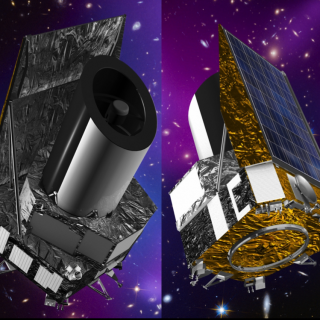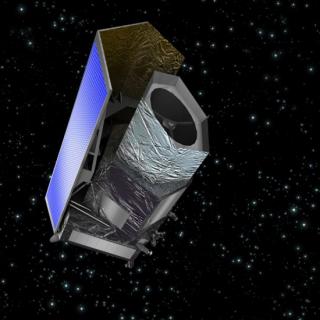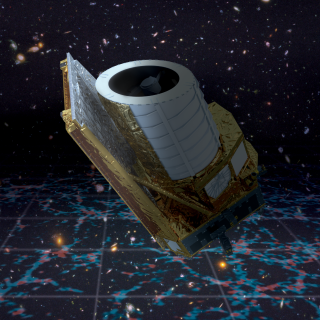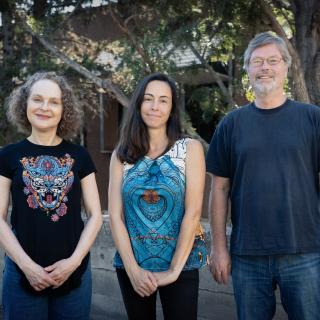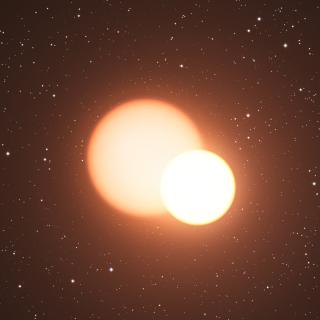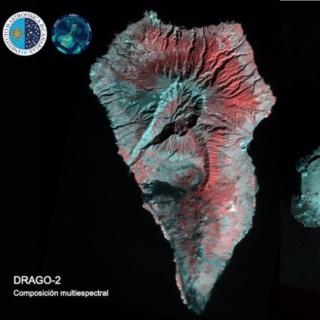The first test images from its two instruments show its potential for achieving its scientific goals. These images will be used to check the instruments and to see how Euclid can be adjusted and fine tuned for best performance. The European Space Agency (ESA)’s Euclid mission, in which the Instituto de Astrofísica de Canarias (IAC) is participating, will produce the biggest and most accurate 3D map of the universe.
Euclid’s two instruments VIS (VISible instrument) and NISP (Near Infrared Spectrometer and Photometer) have taken their first test images. The results indicated that this space telescope will attain the scientific objectives for which it was designed, and will maybe obtain far more.
Although there are months to go before Euclid gives us its new, true, picture of the universe, the present achievement means that the scientists and engineers working on the mission are confident that the telescope and its instruments are working well.
“After more than 11 years of design and development of Euclid it is exciting and very emotive to see these first images” says the project manager of Euclid Giuseppe Racca. “It is even more incredible when we think that here we can see only a few galaxies, produced with a minimum adjustment of the system. When Euclid is fully calibrated it will observe thousands of millions of galaxies to build up the biggest 3D map of the sky ever observed”.
Yannick Mellier, the leader of the Euclid Consortium, adds: “These excellent first images, obtained with the visible and near infrared instruments of Euclid open a new era for observational cosmology and statistical astronomy. They mark the beginning of the search for the nature of dark energy, which the Euclid Consortium aims to carry out”.
The Universe in the infrared
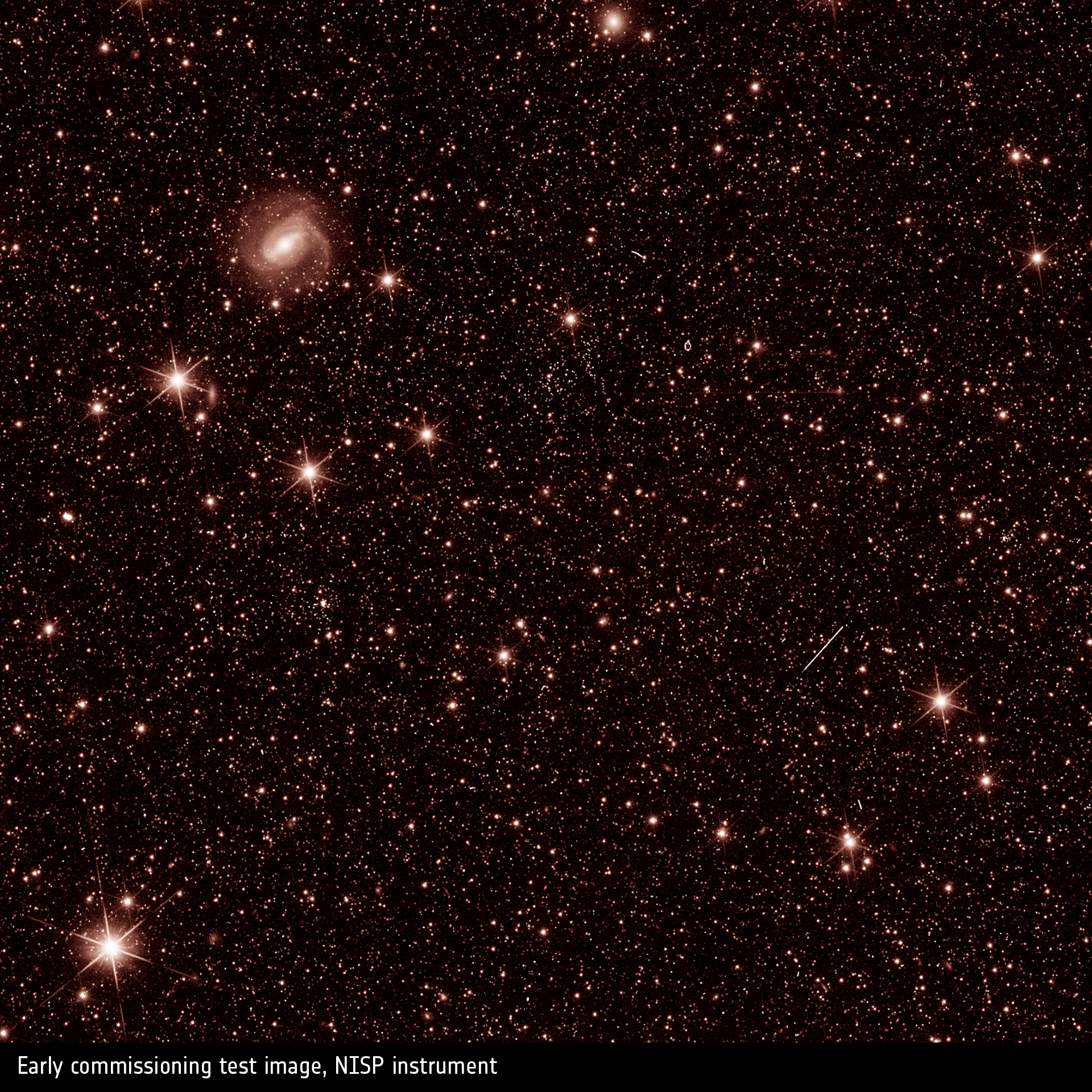
Euclid’s near infrared spectrometer and photometer (NISP), in whose design, construction and validation of the control electronics in the focal plane the IAC has collaborated, together with the Polytechnic University of Cartagena (UPCT), has a double function: to obtain infrared images of galaxies, and to measure the amount of light that galaxies emit at a number of wavelengths. This second measurement permits the direct calculation of the distance to each galaxy.
Combining this information about the distance with the shapes of the galaxies measured with the visible instrument VIS it will be possible to map the distribution of the galaxies throughout the universe, and how this distribution has changed with time. As the last step in the analysis this 3D map will give information about the dark matter (which dominates the gravitational field), and the dark energy, which makes the expanding universe accelerate.
The ICE-CSIC, the Instituto de Altas Energías (IFAE) and the Institute of Space Studies of Catalunya (IEEC) have been participating since 2006 in the initial concepts of the mission, and have been responsible for the design, construction, and testing of the Filter Wheel Assembly (FWA) of the NISP instrument. The Polytechnic University of Cartagena (UPCT) in collaboration with the Instituto de Astrofísica de Canarias (IAC) have been in charge of the design, construction, and testing of the control electronics of the NISP instrument, specifically of the monitoring and thermal control modules, the inf flight calibration unit the Grism Wheel Assembly (GWA) and the Filter Wheel Assembly (FWA).
“These first tests of image quality show that everything is working as planned, and that the telescope has a great scientific potential” says Rafael Rebolo López, the Director of the IAC and a member of the Management Council of the Euclid Consortium.
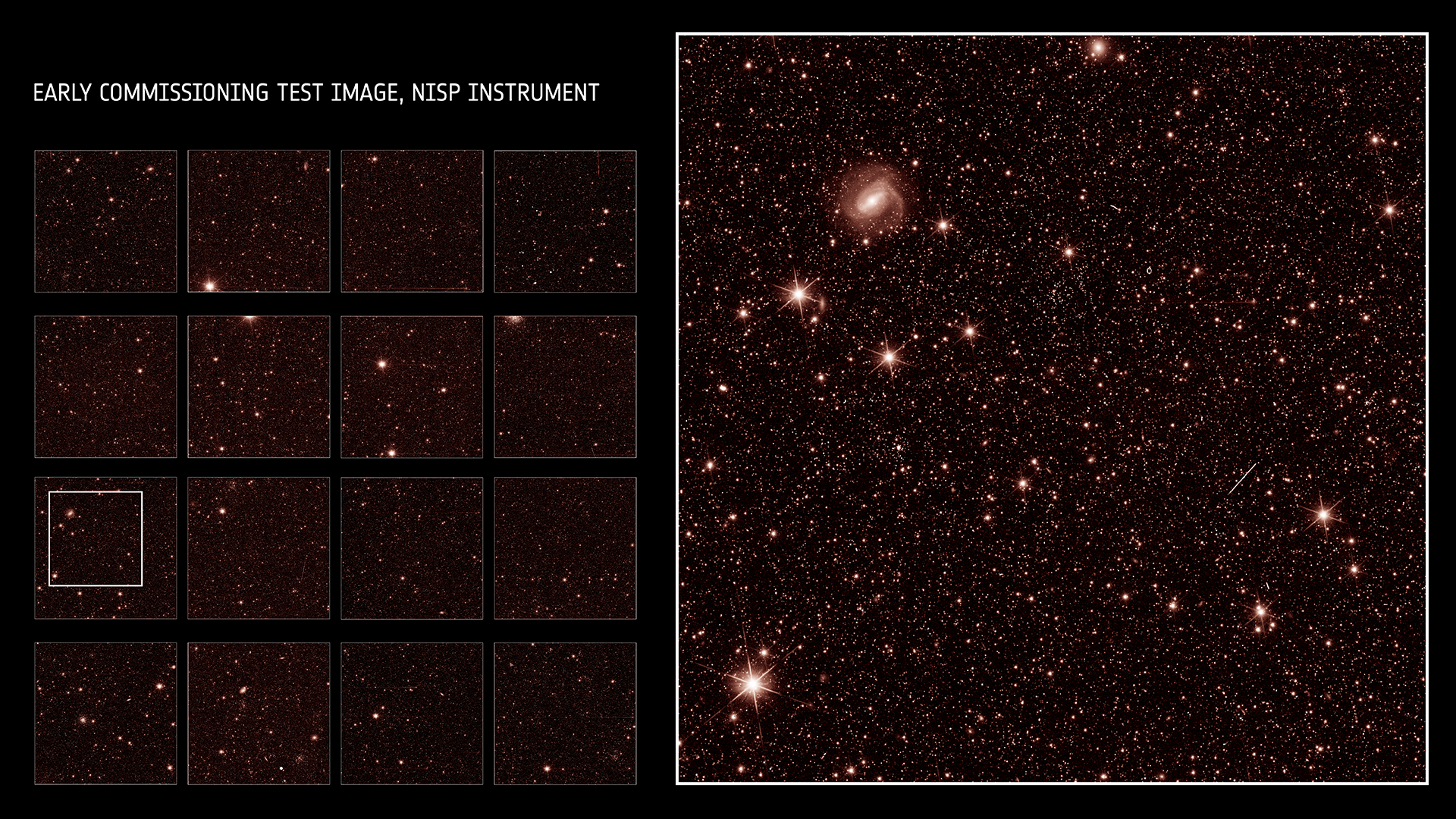
In this second image the light from Euclid’s telescope has passed through a grism, a prism which spreads the light into its spectrum of infrared wavelengths before it reaches the detector. Each vertical line of light in the image is the spectrum of a star or a galaxy. This particular way of observing the universe allows us to determine what each galaxy is made of, and also its velocity relative to us, which allow us to determine its distance from the Earth.
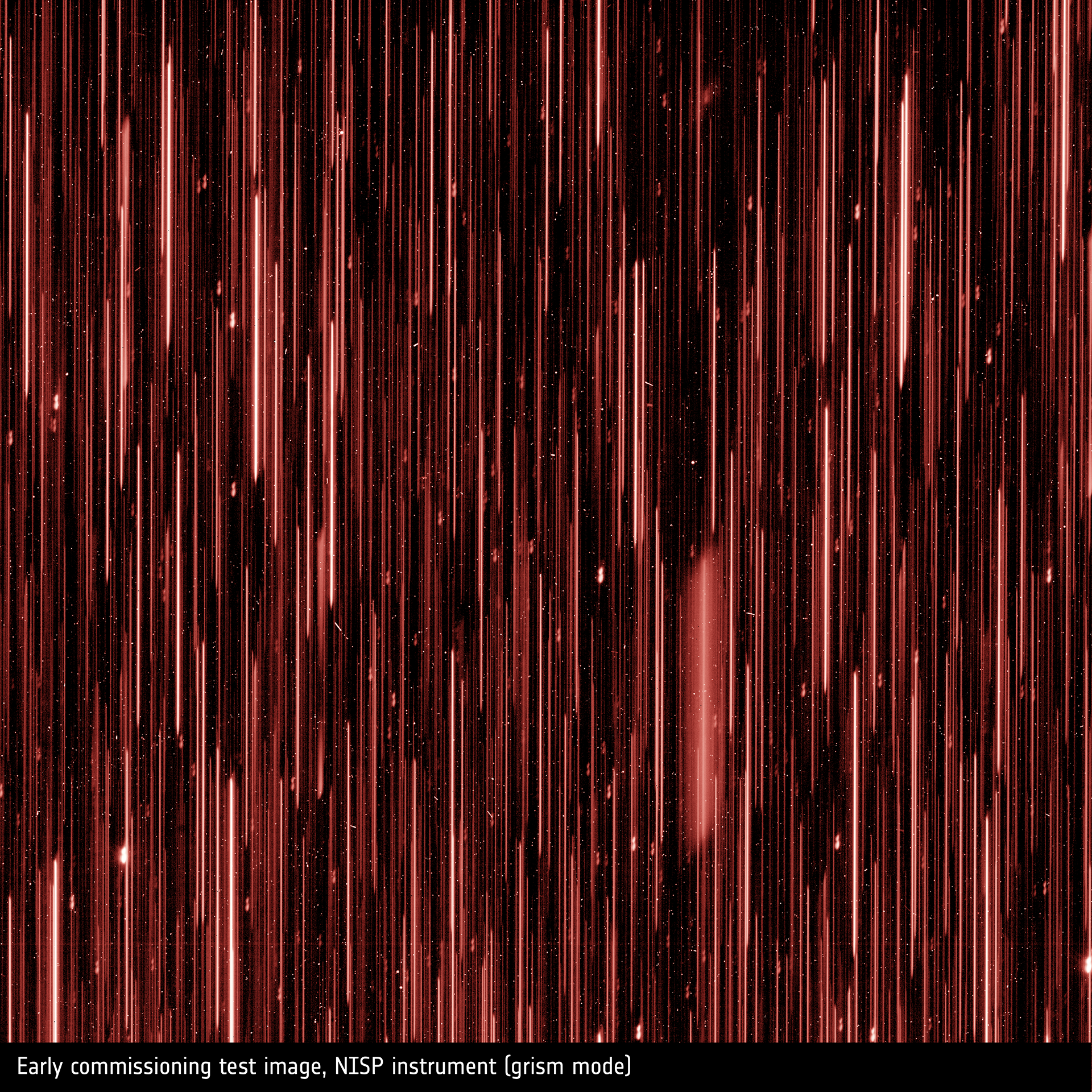
“We have seen simulated images, and we have seen laboratory test images, but I still find it hard to believe that these images are now from the real universe. So detailed, simply amazing”, explains Knud Jahnke, the instrument scientist on NISP. The other NISP instrument scientist William Gillard adds “Each new image we see leaves me completely astonished- I admit that I enjoy hearing those in the room express their astonishment when they see these data”.
During the coming months ESA and their industrial partners will continue to carry out tests and proofs needed to ensure that Euclid works as well as it can. After this “phase of verification and initiation“ the real science will start to be obtained. At that time ESA will publish a new set of images to show what the mission can do.
More information:
Euclid is a space mission of the European Space Agency (ESA), with contributions from the National Aeronautics and Space Administration (NASA). It is the second “M class mission in ESA’s Cosmic Vision programme. (https://www.esa.int/Science_Exploration/Space_Science/ESA_s_Cosmic_Vision).
VIS and NISP were developed and built by a consortium of scientists and engineers from 15 countries, most of them in Europe, but also from the United States, Canada and Japan. Spain plays an important role in the mission, with an important place in the Consortium which has led the mission since it began. The ICE-CSIC the IFAE and the IEEC have been involved since 2006 in the initial concepts of the mission, and have been responsible for the design, the construction, the mounting and the testing of the Filter Wheel Assembly (FWA) of the NISP instrument. The Polytechnic Institute of Cartagena (UPCT), in collaboration with the Instituto de Astrofísica de Canarias (IAC), has been in charge of the design, construction and testing of the control electronics of NISP. In addition, 80 European companies have participated in Euclid, of which 9 are Spanish; among them are Airbus, Alter Technology, Crisa, Deimos Space, GTD, Navair, Sener and Thales Alenia Space España. In over 20 Spanish institutions there are around 100 scientists preparing the scientific exploitation of the emission ion order to unravel the mysteries of the dark universe.
